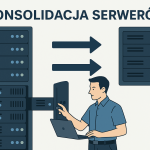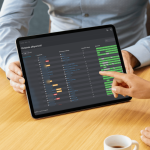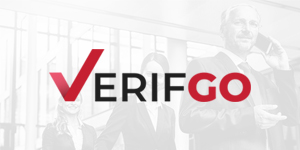
Digital technology is constantly evolving, and more and more companies are choosing to store data in the cloud. For this reason, protecting this information from cyber threats is extremely important. We are talking about cloud security, which includes a set of rules, procedures and technologies to protect cloud environments.
For cloud service providers, cloud security is the foundation of their infrastructure. It protects data from all kinds of attacks and intrusions, guaranteeing its integrity and security. As a result, providers need to implement advanced defense mechanisms to ensure their customers’ secure use of services.
Today’s computing systems need more than just physical protection for servers. Advanced security methods such as:
- data encryption,
- threat detection systems,
- access management.
That’s why organizations managing their IT resources through cloud technologies are making the security of this data a priority.

Definition and meaning of cloud security
Cloud security, also known as cloud data protection, refers to securing information, applications and services running in a cloud environment. Its primary goal is to ensure the integrity, confidentiality and availability of this data. With the right safeguards in place, companies can operate smoothly and are shielded from potential cyber threats.
In the context of cloud service providers’ infrastructure, this protection is of paramount importance. It protects against a variety of attacks and hacking attempts, which is crucial for everyone using such services. It includes a wide range of protection methods, such as information encryption and access privilege management.
Key aspects of cloud security
The basic aspects of cloud security include several key elements necessary to protect data and resources:
- The zero-trust concept implies a lack of automatic trust in users and devices, requiring constant verification of identity and access, raising the level of security,
- Encryption of information plays an equally important role, both during storage and transmission,
- Even if the data is intercepted by unauthorized persons, encryption ensures its confidentiality and reduces the risk of unauthorized access,
- Monitoring of user and system activity enables quick detection of suspicious activity,
- This allows you to respond immediately to potential threats, which is key to maintaining security,
- Systems change management is another important aspect,
- Regular software updates and control over any modifications help minimize the risk of security vulnerabilities or misconfigurations,
- Attention to these elements ensures that the cloud infrastructure remains protected from cyberattacks.
Cloud security threats and challenges
Cloud security threats are several key aspects that require attention. Cyber attacks in this environment are one of the main challenges for companies using cloud services. Such incidents can lead to data theft or corruption, which not only brings financial losses, but can also damage reputations.
It is equally important to take care of data integrity and protect against data loss. This can occur due to technical failures or the actions of hackers. Therefore, it is important to effectively manage user identities and properly configure systems to reduce the risk of leaks.
Encryption plays a key role in protecting data in the cloud. It ensures that information is secured both during transmission and during storage, minimizing the chances of unauthorized access even when data is attempted to be intercepted.

Finally, it is worth mentioning risk management as an ongoing process that requires regular audits and monitoring of cloud infrastructure. This makes it possible to quickly detect and neutralize threats. Taking care of these issues increases the level of security in the cloud environment and protects valuable organizational information.
Cyber threats in the cloud environment
Cyber threats in the cloud are a variety of attacks that can harm data and systems stored in this environment. One example is phishing, which takes advantage of errors or lack of user awareness. Another threat is malware capable of infiltrating cloud infrastructure. In such cases, the principle of limited trust, which involves regular verification of both users and devices, becomes extremely important.
Protecting computing environments requires protection against direct attacks by hackers and subtle attempts at data breaches. Effective management of these threats relies on advanced security techniques. In addition, it is extremely important to constantly monitor network activity so that unauthorized activities can be quickly detected.
Data integrity and protection against loss
Data integrity plays a key role in cloud security, protecting information from unauthorized modification and loss. Organizations are implementing a variety of strategies to guarantee its integrity. Regular backups are one example of measures to recover information after technical failures or hacking attacks. Monitoring access to data is also an important element of protection to prevent unwanted intrusions.
A variety of mechanisms support data integrity, such as:
- version control,
- system audits.
Version control makes it easier to track changes to files, which helps identify the source of information problems. System audits, on the other hand, focus on detecting and fixing vulnerabilities in the cloud infrastructure.
Storing data according to best security practices reduces the risk of damage or loss of information. Companies often use advanced encryption algorithms for protection during data transmission and storage, which increases protection against unauthorized access.
Paying attention to these issues ensures better protection of information assets and builds confidence in cloud services as a secure solution for businesses looking for flexible methods of storing their information.
Data encryption as a security mechanism
Data encryption is a key way to protect information stored in the cloud from unauthorized access. It includes both encryption of data resting and data in transit. This ensures that information remains confidential and untouched, and even if intercepted, would be unintelligible to unauthorized parties.
This is an important information security feature that significantly reduces the risk of data leakage and increases security when sharing data online. This is especially important for companies looking to protect their assets from increasingly complex cyber threats.
A variety of encryption algorithms are available and suited to different cloud environments. Choosing the right solution depends on:
- specific needs of the company,
- legal requirements,
- Industry standards for security features.
Principles of data protection in the cloud
Cloud data protection policies focus on meeting regulatory requirements, such as RODO, which is crucial for companies using this solution. Concern for compliance with these regulations not only protects against possible financial penalties, but also builds customer trust by demonstrating attention to data security.
Implementing policies related to access control and identity management plays an important role. These ensure that data remains in the hands of only authorized individuals, minimizing the risk of unauthorized access.
- Access control involves the process of identifying and authenticating users, which is a key element in protecting information,
- Identity management supports these activities by effectively administering user data and their access to cloud resources.
IT audits and monitoring are indispensable for ensuring a high level of security in a cloud environment. Regular audits make it possible to detect potential vulnerabilities in the system and fix them quickly. Monitoring user activity keeps track of suspicious activity, increasing the ability to respond immediately to threats and prevent data security incidents.
Compliance rules and RODO
Compliance with regulations such as RODO is fundamental to data protection in the cloud. Companies must comply with both local and international standards related to personal data. The RODO particularly emphasizes responsibility for the secure processing of customer information.
To ensure compliance with RODO, companies should:
- Implement policies to ensure data security,
- document its activities in accordance with applicable regulations,
- Conduct audits on a regular basis to detect and address any security vulnerabilities.
Taking care of compliance strengthens customers’ confidence in cloud services. It shows that companies are serious about data protection. This is essential for maintaining a positive image in the market and avoiding financial penalties for regulatory violations.
Access control and identity management
Access control and identity management are the foundation of cloud data protection. This involves identifying users and allowing only authorized individuals to access specific resources. Even people working inside the organization must go through a process to confirm their identity, which is based on the principle of limited trust.
Identity management is key to overseeing user data and access. With such systems, it becomes possible to monitor activity, making it easier to detect unauthorized access attempts. Effective implementation of these solutions reduces the risk of information leakage and increases the level of security in the cloud environment.
Advanced security mechanisms in the cloud
The automation of security activities is integral to the effective management of these threats, enabling rapid detection and response to potential attacks, significantly increasing the efficiency of defense. Machine learning supports these processes by analyzing vast amounts of information and identifying patterns that may indicate a threat.
Control and detection mechanisms are another important component of advanced cloud security. They include technologies that monitor both network traffic and user activities, allowing you to quickly identify unauthorized activity. They help maintain system integrity and protect against attempted security breaches.
Securing cloud workloads and secure file sharing are also important aspects of protection in a cloud environment. Enterprises must take care to properly configure their systems to ensure security when storing and transferring data between users or applications. Implementing advanced protection mechanisms increases the infrastructure’s resilience to a variety of attacks and secures the organization’s valuable information resources.
Automation and machine learning
Automation and machine learning play an important role in modern cloud security systems. With automation, threats can be detected and responded to instantly, significantly improving security effectiveness. For example, with machine learning, systems analyze huge data sets to catch patterns that may suggest potential dangers.
These technologies not only improve incident response, but also support better management of data security risks in the cloud.
Control and detection mechanisms
Control and detection mechanisms in the cloud are essential for securing systems from unauthorized access. These include:
- audits,
- monitoring user activity,
- Security incident reporting.
They enable companies to respond quickly to potential threats.
Detection control relies on continuous tracking of network traffic and user activities to identify suspicious behavior in real time. Such solutions enable instant response, reducing the risk of serious data breaches.
Preventive mechanisms perform an equally important function. They provide protection against known threats by:
- Implementation of security policies,
- security technologies.
- Their effective use increases the resilience of cloud infrastructures to attacks, while protecting valuable enterprise data.
Protect cloud workloads and share files securely
Cloud data protection and secure file sharing are the foundation for maintaining the integrity and confidentiality of information. Encryption helps minimize the risk of leakage during storage and transmission.
In a hybrid cloud environment, where data moves between different systems, it is crucial to apply secure resource sharing policies. For example, access control limits the possibility of unauthorized access to sensitive information.
Security policies together with detection technologies allow monitoring user activities and detecting threats in real time. This enables rapid response to security incidents and effective protection of the organization’s valuable data. In addition, the automation of these processes increases the efficiency of protection, which is extremely important in the dynamically changing cloud environment.
The future of data security in the cloud
The future of cloud data protection will be determined by technological advances and rising security standards. More and more companies are choosing to migrate their resources to the cloud, which underscores the importance of the shared responsibility model. In this approach, security responsibilities are shared between the service provider and the customer, requiring them to work closely together.
- Infrastructure as a Service (IaaS),
- platform as a service (PaaS),
- software as a service (SaaS).
Each of these models poses specific data protection requirements, necessitating the implementation of modern security mechanisms.
Automation along with machine learning will play a key role in identifying threats and responding to them quickly. They make it possible to analyze huge data sets in real time, which significantly improves the efficiency of security operations.
Blockchain technology has the potential to become a more common tool to ensure the integrity and transparency of data operations. Cryptographic key management security and zero-trust principles are likely to be the norm in future systems that protect information.
These transformations will significantly affect the management of data and applications in the cloud, forcing companies to constantly adapt their security strategies in the face of new technological challenges.







